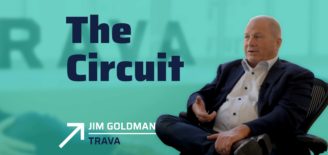The KPIs You Need for Agile Startup Marketing
Staying agile means that you’re flexible enough as a company to change what isn’t working and scale up what is working. Other than development, no other department at a startup should be more agile than marketing.
Many startups waste thousands of dollars a month on marketing channels and campaigns that produce little-to-no return on investment (ROI), while at the same time failing to recognize and scale the channels that are actually producing customers.
Here are a few key performance indicators (KPIs) that will help introduce your startup to agile marketing:
Key Performance Indicators
note: all channel KPIs are first-touch (lead discovery source) only – we’ll discuss attribution further below
Leads per Month by Channel
A good place to start is to segment your lead generation activities by channel. How you define your channels is up to you, but a basic top-level category grouping is:
- Inbound
- Outbound
- Referral
- Affiliate / Reseller
From there, you can drill down even further:
- Inbound
- Organic Search
- Direct
- Social Media
- Outbound
- Events
- Sponsorships
- Direct mail
- Display (could be Inbound depending on how you feel about it)
- Paid Search (could be Inbound depending on how you feel about it)
- Referral
- Current Customer Referral
- Partner Referral
- Word of Mouth (unknown/untraceable referral source)
- Previous Customer Referral
- Affiliate / Reseller
Activations per Month by Channel (+ Conversion Rate)
It’s important to differentiate between the leads that activate (enter the sales process) and the ones that don’t. Some organizations label these marketing qualified leads (MQLs) and later sales qualified leads (SQLs).
If you do a lot of content marketing, you’ll likely have more MQLs than SQLs. Your sales team won’t be impressed by a high level of MQLs if they aren’t activating. For example, if a demand-gen campaign like an eBook or white paper is generating a lot of conversions, but they aren’t entering the sales cycle, you may want to re-examine the content or your lead nurturing activities. Or, if you’re finding that referral leads activate faster, you may want to spend more time on influencer marketing.
Customer Acquisition by Channel (+ Conversion Rate)
This KPI tracks which channels generate customers. Simply examine which SQLs turn into customers and calculate the conversion rate.
Month-over-Month Lead Growth by Channel
Obviously, you want your leads to grow over time. While this particular KPI may be a bit of self-fulfilling prophecy based on which channels you focus on and which you don’t, having this information on-hand will be helpful in justifying that focus to the sales and/or leadership team (assuming that growth also leads to a growth in customer acquisition by channel).
Average Cost per Lead
Knowing how much you spend per lead is one of the most important KPIs for an agile marketing department, particularly for startups who are staying lean. Keeping track of every penny is critical, especially if your marketing budget is a fixed percentage of overall company revenue.
Where you set your cost per lead goal is up to you. A good starting place is to simply take your monthly marketing budget and divide it by your monthly lead goal. So, for example, if your monthly marketing budget is $4,000 and your monthly lead goal is 100, your cost per lead goal is $40. Be sure to remove marketing expenses not directly tied to lead generation.
Average Cost per Lead by Channel
Once you know your average cost per lead, you can see how each channel performs individually. If your Inbound channel is generating 20/100 leads per month at a cost of $10 each, and your Outbound channel is generating 80/100 leads per month at a cost of $40 each, you might at first-glance decide to focus more on Outbound and scale back your Inbound activities.
The devil, however, is in the details. If you’re also tracking KPIs like customer acquisition rate and time-to-close by channel, you may find that those 20 Inbound leads generated more sales, faster, than the 80 Outbound leads. This is the very essence of agile marketing.
Average Cost per Sale by Channel
Where you set your cost per sale goal is up to you. A good starting place is to simply take your annual marketing budget and divide it by your annual customer goal. So, for example, if your annual marketing budget is $50,000 and your annual customer goal is 300, your cost per sale goal is $166.
Average Time-to-Close by Channel
This KPI tracks how long it takes for a lead to go from MQL to SQL to a closed deal. In tracking each channel, you can identify which marketing efforts generate leads with short or long sales cycles. If you wanted to get extremely detailed in your cost per sale measurement, you could take into account the length of the sales cycle as an indication of cost (your sales people’s time) and apply that to cost per lead or cost per sale (be sure to update your goals as well).
Customer Churn Rate by Channel
While there are many, many reasons why a customer may choose not to renew, it would be interesting to see which channels have more churned customers than others. Perhaps your referral leads stay customers longer than those who bought after discovering you via organic search. Having this data couldn’t hurt as you are looking at all variables together.
Next, let’s talk about attribution modeling.
Attribution Modeling
Not every customer will buy from you after one interaction. It’s important to track and measure all the touch-points a prospect makes as it relates to your marketing efforts.
There are several ways to approach attribution modeling:
- First-Touch Only Attribution – the channel or campaign that generates the lead (model used with the KPIs above)
- Last Touch Only Attribution – the last touch the prospect takes before buying
- Multi-Touch Linear Attribution – each touch is tracked and carries equal weight/importance
- Multi-Touch Time Decay Attribution – each touch is tracked but last-touch carries highest weight/importance
- Multi-Touch Position Attribution – each touch is tracked and each touch is assigned a different weight/importance
The first-touch attribution model represents the lowest barrier of entry to startups, especially those who haven’t yet invested in robust marketing automation.
At Bloomerang (a SaaS for nonprofits), we subscribe to the multi-touch position model, despite not yet having marketing automation. Touch points are tracked manually in our sales CRM by lead qualifiers on the marketing team. It takes time and effort, but it dictates what marketing efforts we spend time on and which we don’t. Each piece of content, website conversion point and outbound activity (like talking to a prospect at a trade show) is assigned a pre-determined value. This is particularly valuable in cases where the sales cycle becomes protracted. For example, you may get a first-touch from one channel, only to have the lead go cold. If a second-touch reactivates them, you would want to place a higher value on the source of the second touch.
A recent sale had the following conversion path:
Trade show 11/4 (first-touch) -> Website conversion* 11/19 (second-touch) -> Activated 12/1 -> Downloaded an eBook** 2/23 (last-touch) -> Closed 2/25
* viewed our recorded product demonstration
** downloaded our data conversion eBook
While the first-touch got things kicked off, I would not value it as highly as the last-touch. Considering how long they were in the sales cycle, it’s possible that the eBook put to rest any concerns they had about committing to the product. This conversion path is something that could be used to justify the investment in creating the eBook.
One common qualm with the multi-touch position model is that your value assumptions may or may not be incorrect. Part of staying agile in marketing is knowing that you can adjust those values at any time. Few do it, but those who poll a new customer shortly after the sale can gain valuable insights.
If multi-touch attribution is new to you, be sure to download the excellent white paper from DigitalRelevance.
When you know which channels produce the highest-quality, lowest-cost and fastest-closing leads, you can transform your marketing department from a loss leader to a true revenue engine. You can’t be agile without insight.

Steven Shattuck is VP of Marketing at Bloomerang, which helps nonprofit organizations to reach, engage and retain the advocates they depend on to achieve their vision for a better world.
As a HubSpot Certified inbound marketer, he is a contributor to NTEN, Nonprofit Hub, Ragan, Social Media Today, Search Engine Journal, The Build Network, Technorati, Content Marketing Institute, Conductor and Business2Community.
Steven serves in a marketing/communications role on several nonprofit committees, is a frequent speaker at nonprofit conferences, and is a highly sought-after webinar presenter. He is routinely interviewed by media outlets for his expertise in digital marketing.
Recipient of the David Letterman Scholarship, Steven graduated with honors from Ball State University in 2006 with a degree in Telecommunications and Creative Writing. He resides in Indianapolis with his wife and young son.





































